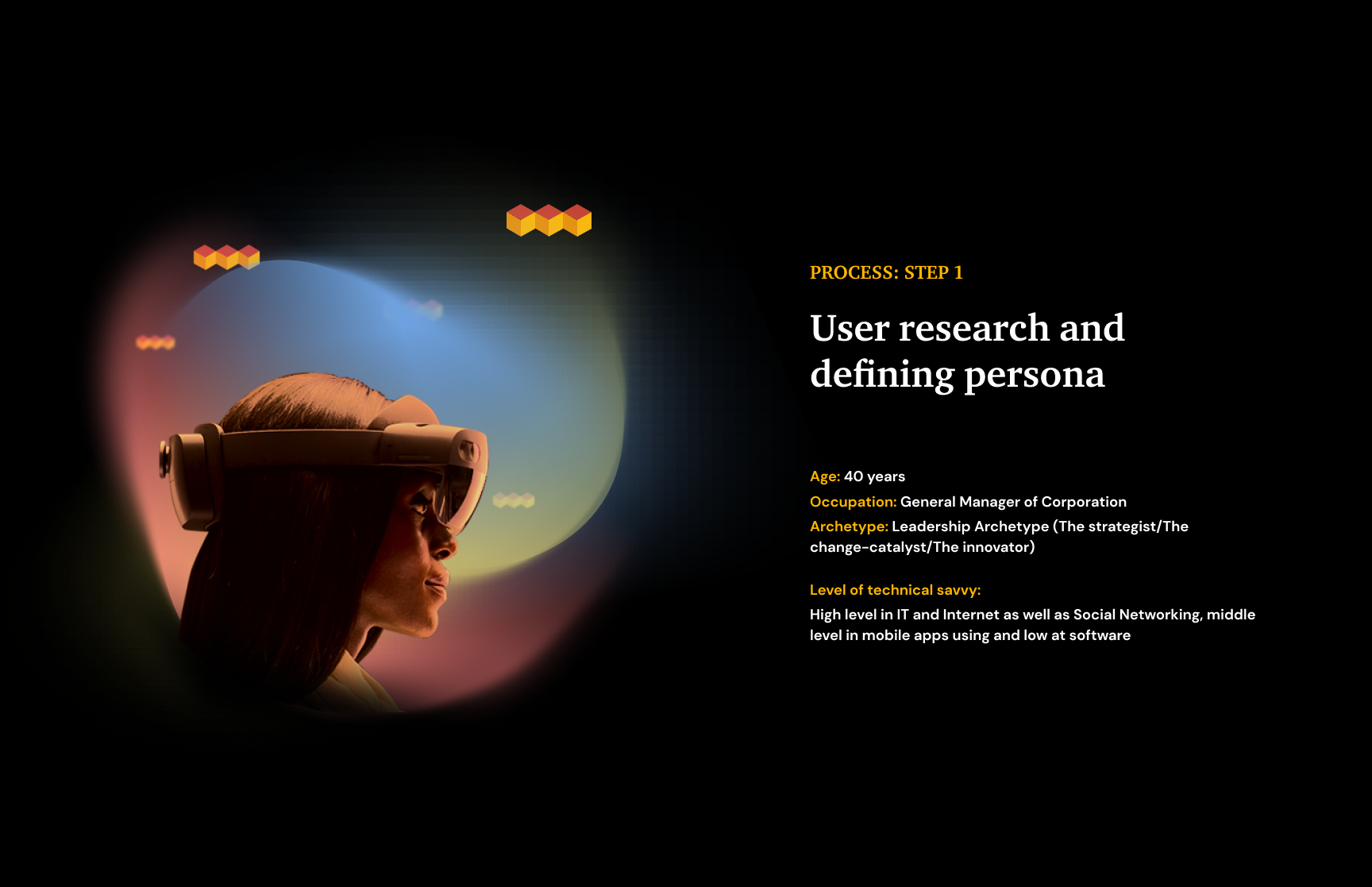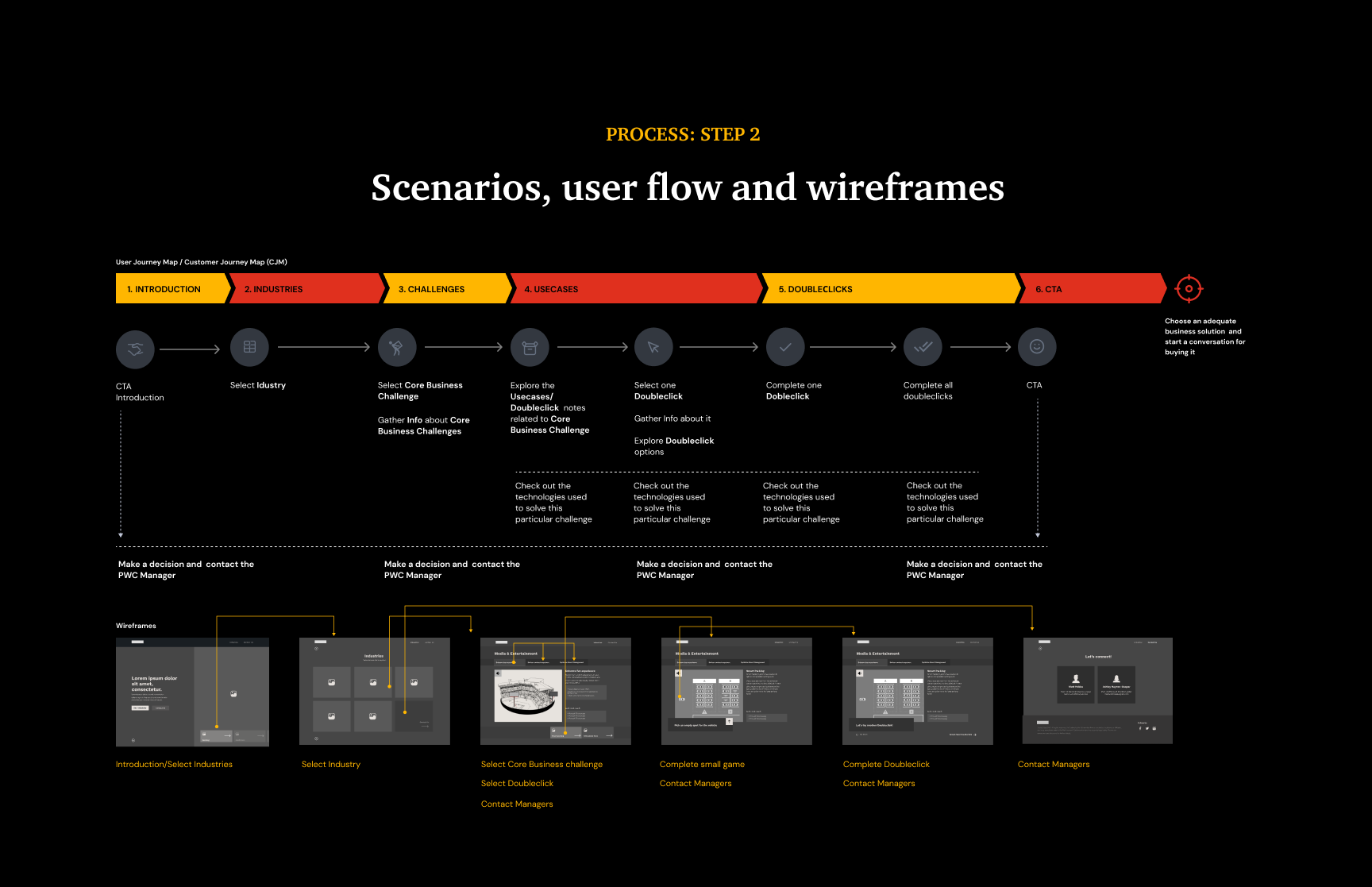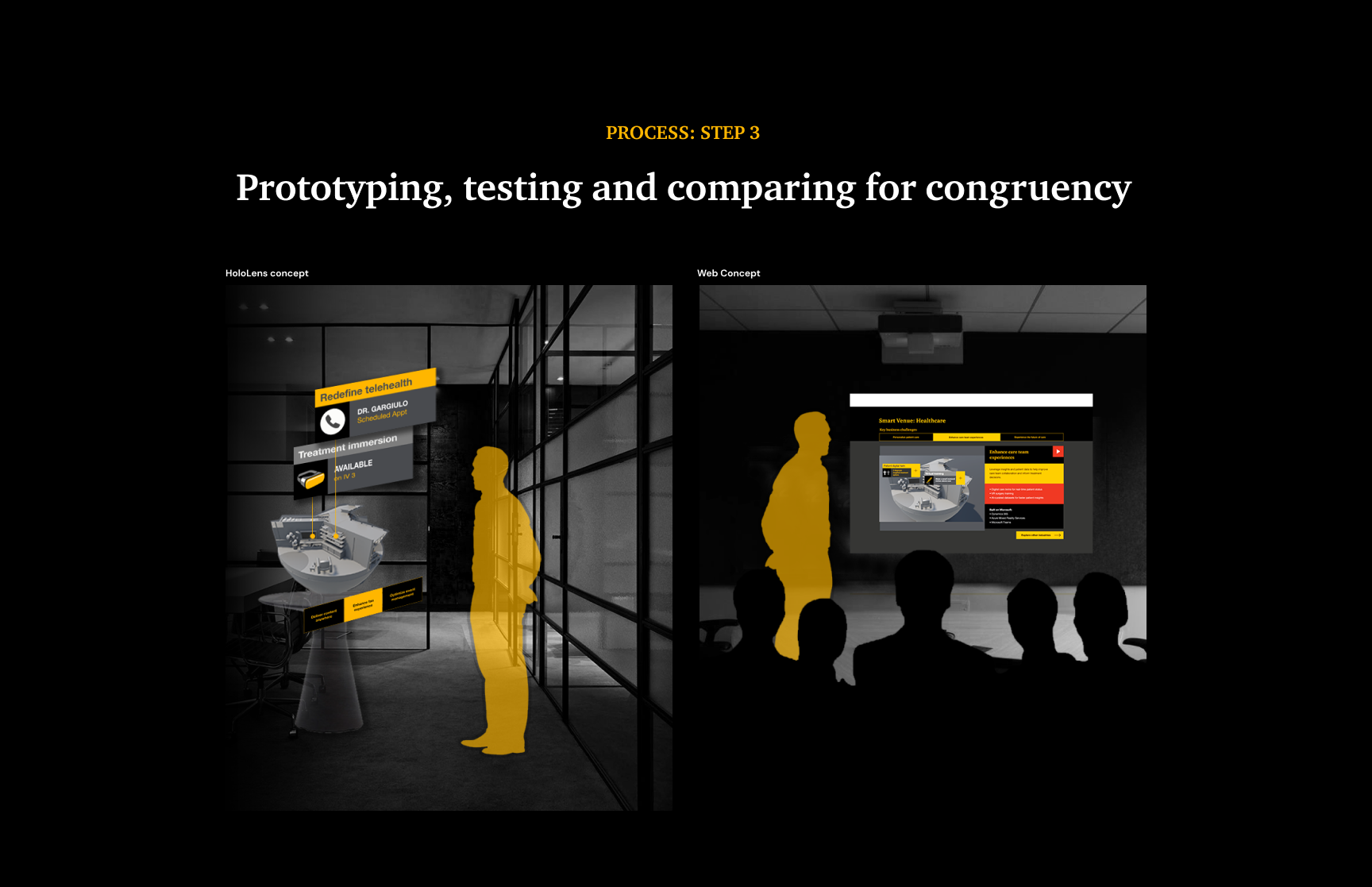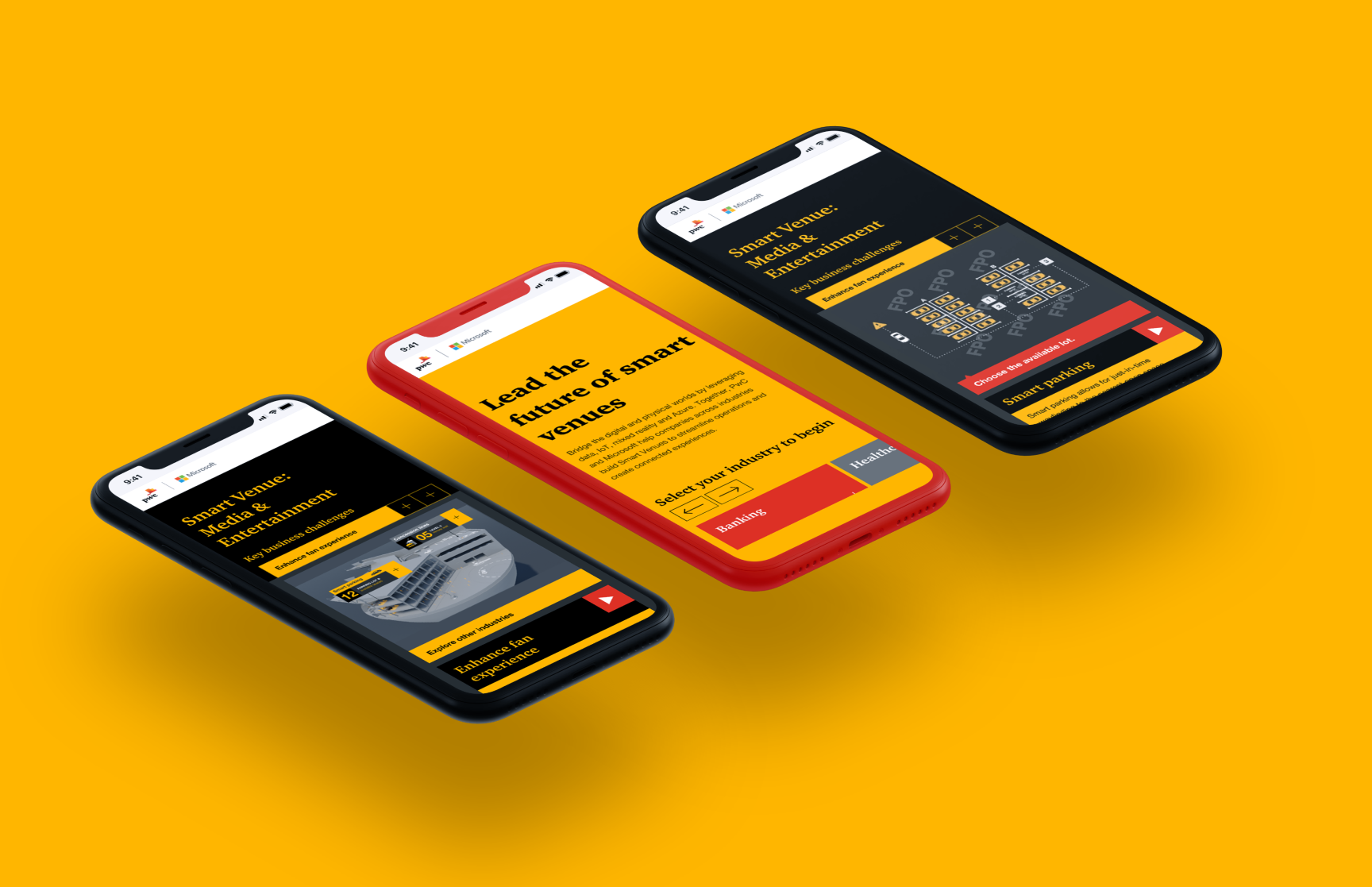
Description
Prototyping
Visual Design
Interaction Design
User Engagement
Data visualization
Design Thinking Approach
AR/VR
more...Challenges and solutions
This project presented several significant challenges, including:
- Coordinating the parallel development of two separate versions
- Addressing the differences in UX patterns between the web and Hololens platforms
- Considering the unique needs and perspectives of the users
- Incorporating elements of gamification in both environments
- Ensuring the optimal use of multimedia, interactions, and animations.
To overcome these challenges, I implemented the following solutions:
- Adopting a clear design workflow, utilizing design thinking principles, and continuously testing and refining the product
- Creating detailed prototypes to test UX patterns and ensure consistency across platforms
- Conducting research to gain insights into the user's journey and incorporating that information into the design process
- Selecting a fixed layout design for the UI to ensure consistency across platforms
- Developing a strong design system that adheres to the company's branding guidelines
- Prioritizing accessibility and visibility in the design to ensure that key elements are easily accessible
- Implementing best practices for asset management and testing the integration of animations and microinteractions
User research and defining persona
Age: 40 years
Occupation: General Manager of Corporation
Archetype: Leadership Archetype (The strategist/The change-catalyst/The innovator)
Level of technical savvy: High level in IT and Internet as well as Social Networking,low/middle level of AR/VR using
Devices he/she uses: an expensive mobile phone (I selected top IOS model as prioritized device) and a presentation display in the office (TV in a horizontal orientation).
The Anti-Persona in this case is the company's employees who do not make global decisions, but only implement a given strategy.
Via a quick analysis of customer data on social media, I came to the conclusion that our persona is a general manager from a large, long-established industry. This is a person who is good at using the mobile Internet and is engaged in social networks, online shopping, but has no experience in using VR/AR products.
Empathy, Scenarios, Userflow and wireframes
At the initial stage, users familiarize themselves with general concepts about the company, including upcoming game mechanics. They may also select the industry to which their business belongs or connect directly with a manager if they already know what PWC technology their company requires. Additionally, the navigation menu is accessible at all times, allowing users to jump directly to use cases and showcase them to colleagues without unnecessary steps.
Next, users confront the primary challenges that their businesses face, and via gaming double clicks, they can visualize how PWC technologies address these challenges. After reviewing the use cases and passing the double clicks stage, users can contact a specific PWC manager to order and implement a particular technology.
Throughout each step, we utilize empathy to identify the user's objectives and obstacles, enabling us to overcome them effectively. We also avoid any actions that could lead to users leaving the site, as this would create maximum frustration. Therefore, we meticulously reviewed each point at every stage and incorporated these considerations when developing mockups.
Prototyping, Testing and comparing Platform’s congruency
We understand the significance of prototyping as a means to visually represent the user interface and interaction flow on both web and VR platforms. By creating prototypes, we can validate design decisions, gather feedback from stakeholders, and ensure that the user experience aligns with the intended vision. Through iterative prototyping, we refine the platform's interface, functionalities, and overall user flow to optimize usability and engagement.
We conducted comprehensive usability testing sessions to evaluate the effectiveness of the user interface, identify any pain points or areas of improvement, and gathered qualitative and quantitative feedback. Thus, we decided to change the informational architecture of the web, skip some interaction steps. We also experimented a lot with different gamified techniques and decided to use the most simple one.
We pay particular attention to ensuring the platform's congruency, which involves assessing how well the various components and features align with the overall project objectives and user needs. We evaluate the congruency of the platform's design elements, information architecture, content, and functionality, ensuring they work harmoniously together to deliver a cohesive user experience. By conducting thorough reviews and comparisons, we ensure that the platform remains consistent and aligned with the project's goals throughout its development.
UI Design and Scaling
The UI design phase focuses on creating an aesthetically pleasing and intuitive user interface that aligns with the project's overall goals and enhances the user experience. I carefully craft the visual elements, typography, color schemes, and layout to ensure consistency and visual coherence. Through a user-centered approach, we prioritize usability and accessibility, employing industry best practices and design principles to guide our decisions. By creating a visually appealing and user-friendly interface, we aim to engage and captivate users while effectively conveying information and facilitating their interactions with the platform.
As the platform grows and expands, scalability becomes a critical aspect to consider. I designed and implemented the platform with scalability in mind, allowing it to handle different devices, growing assets, and evolving business needs.







